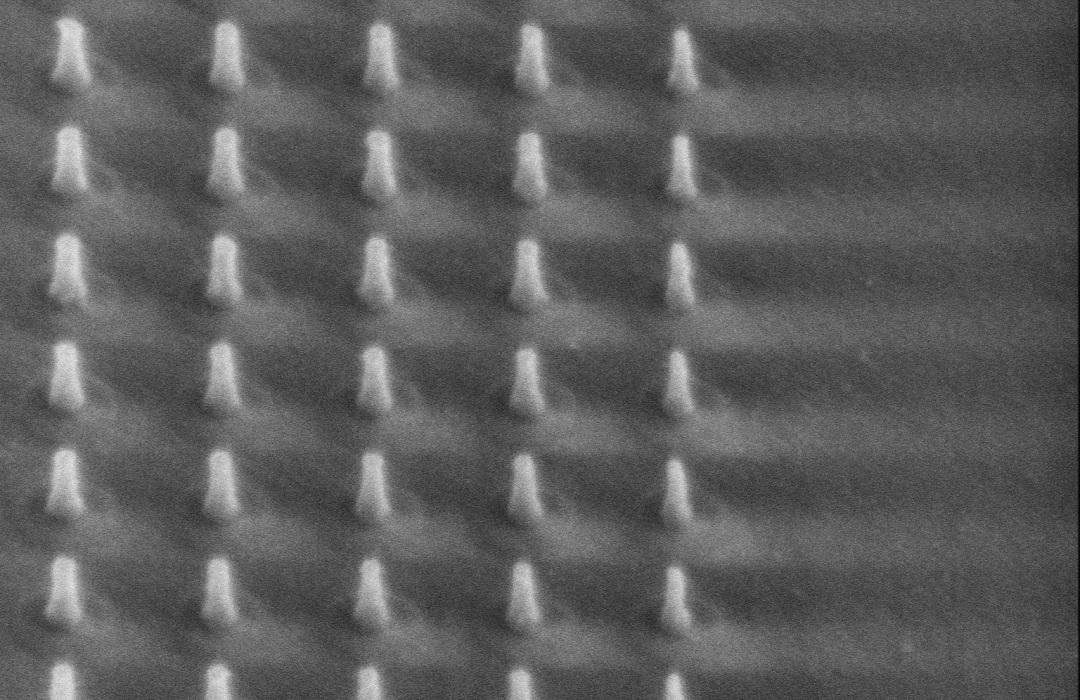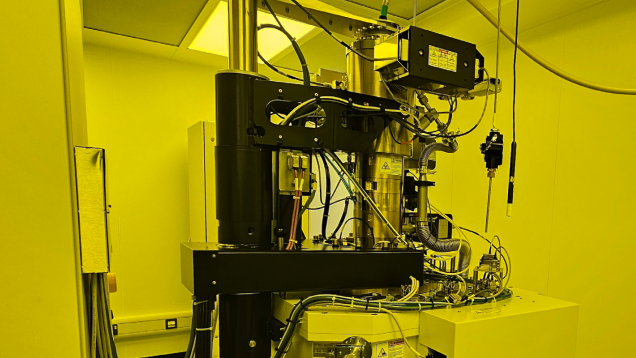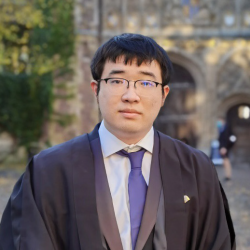
Submitted by Dr Mark Leadbeater on Thu, 06/06/2024 - 13:34
Revolutionising Dynamic Optical Control
In the rapidly evolving field of optical engineering, the integration of metasurfaces with dynamic control elements remains a pivotal challenge. Wenhan Zhang, a researcher from the CPDS group, has fabricated a liquid-crystal Huygens metasurface, leading to an unprecedented level of phase modulation in these structures. The technology promises significant advances in the biomedical sector.
Wenhan successfully fabricated a high-density pattern metasurface array using electron beam lithography. His innovative approach allowed him to manipulate the metasurface’s resonance properties electrically, harnessing the anisotropic properties of liquid crystals. As a result, he achieved continuous phase-only tuning in transmission over a full 2π range; a First in the field.
The precise control of light transmission achieved opens new frontiers in non-invasive medical imaging, enhancing diagnostic accuracy and patient care. With the aim to publish findings in a renowned journal, this research has the potential to revolutionise medical technology. In the burgeoning field of mixed reality, the technology promises innovative interaction modalities, blending digital and physical worlds seamlessly.
Collaboration with the Henry Royce Institute
To fabricate the structure, Wenhan utilised the Raith EBPG 5200 Electron-Beam Lithography System at the Henry Royce Institute, Royce support was instrumental in the team’s success, providing access to state-of-the-art equipment, funding, and invaluable expertise: “The Electronic Beam Lithography system’s 200 mm platform allowed for processing multiple samples simultaneously, and its advanced pattern-generating features enabled high fidelity pattern production. Additionally, the system’s high precision and capability to achieve less than 8 nm feature size enabled us to fabricate the complex patterns essential for our liquid crystal tunable Huygens metasurface. This level of detail was crucial for the success of our project and would not have been possible without the EBL system.” commented Wenhan.
Wenhan Zhang
| Wenhan graduated from Swansea University with a BEng degree in Electrical and Electronic Engineering in 2020 and entered the Connected Photonic and Electronic Systems CDT at the University of Cambridge in October 2020, earning his MRes degree in 2021. After that, he began his PhD studies at the University of Cambridge's Photonic Devices and Sensors Group. His research area is ‘Tunable Metasurface devices with liquid crystal integration’ under the supervision of Dr Mike Pivnenko. He is a member of St. Edmund's College. |



